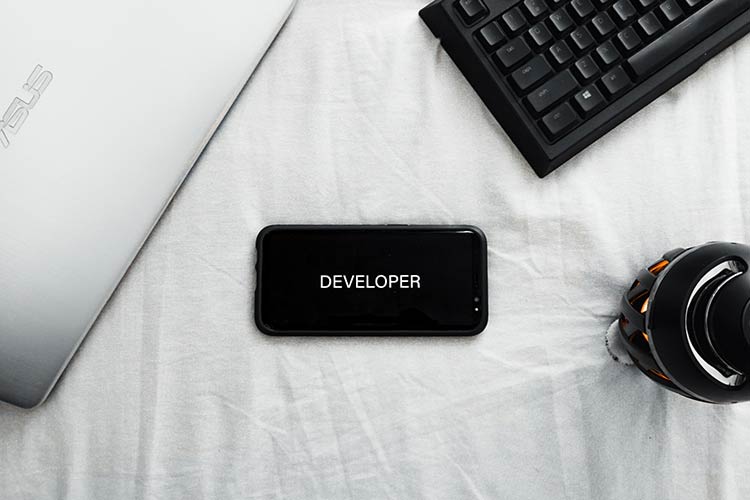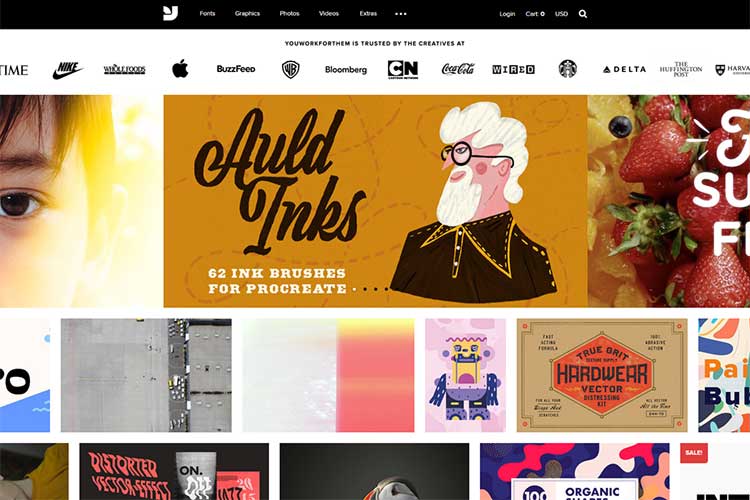Being a freelancer means a lot of freedom to plan your own days at work.
But how to become a freelancer that is successful? It also does requires discipline and planning. Being your own boss, you need to be good at making the right rules to succeed.
Most of these tips sound just like common sense, but actually remembering everything when it’s needed isn’t necessarily as easy as you would think. Here is the collection of some great tips, scroll to your interest!
Table of Contents:
- How To Become a Freelancer That Is On Track Of Success
- The Knowledge That Will Double Your Hourly Rate As A Web Designer
- 11 Awesome tips to Work without Distraction
- Prepare For Challenge: How To Keep Deadlines
- How the Web Industry is Changing STEM’s Perception
- Why You Should Take a Web Break and Explore The World
- Design a Pricing Plan Using CSS3 in Under 15 Minutes
- Jumpstarting Your Startup Idea
- 10 Reasons Why You NEED to Launch Your Online Portfolio NOW
- Three Types of Friends Everybody Should Have: Mentor, Peer, and Protegé
The Freelance Designer Toolbox
Unlimited Downloads: 500,000+ Web Templates, Icon Sets, Themes & Design Assets
All starting at only $16.50 per month
How To Become a Freelancer That Is On Track Of Success
Different rules work for different people. Having worked as a freelancer on and off for over ten years, I’ve created this list of my best tips on how to succeed. Maybe you already use several of these or versions of them, great! Hopefully you will also find a tip or three that can help you to succeed in what you do! :)
The most important tip coming above all of this. You are in the web design industry, that changes quickly so you must be committed to never ending learning. You gotta love what you do to do this. But when you do, you will be able to offer higher end services for your clients and eventually double your freelance rates.
1. Make a marketing/business plan

This should be the first thing you do. Even though you have all the info needed in your head, putting it on paper will give many advances and definitely be worth the extra work. Not only will you that way be «forced» to think through important issues and possible challenges before they occur, but it can also be a lot easier for you to get the needed help from potential business partners or investors when you have a good business plan to show them. You need to know how you will find clients, you need a plan in place, here is an article to get you started.
2. Plan your days ahead
Allow yourself an hour or so at the beginning of each work week, or the last hour of the previous week to plan the upcoming week. Then it’ll be easier for you to plan how to spend your hours to reach the deadlines you have upcoming. The more ongoing projects you have, the more important this is.
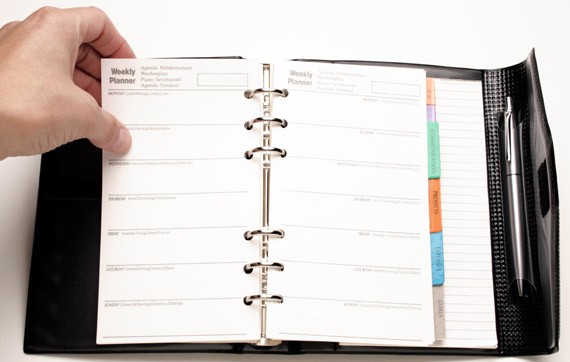
3. Use free software, but buy few premium tools that will make you more productive
Starting up as a freelancer can be challenging economically, and by choosing from all available and good free software you can save a lot of costs without necessarily having to give up a lot of functionality. Free doesn’t have to mean it’s not good software, there are more and more options available every day so make sure you check out what can be used related to your business. When you buy a computer, camera, tablet or printer make sure to check out the software that comes with it as well. You may be in for a positive surprise.
Don’t try to pay for everything, but pay for the premium tools you would use daily. For example, when building websites, I never use free themes, I always go either for a quality premium WordPress theme or framework. But again, this expense doesnt make sense to you if you are a graphic designer. If you are building websites regularly for your clients, it totally does make sense to become 10x more productive.
4. Create an eye-catching logo
To look professional and catch those potential clients in a tight market, requires hard work when it comes to branding yourself. Creating an eye-catching logo (or getting someone to do that for you if you lack the skills yourself) can make you seem more professional and easier to see. The power of a good logo and actually using it on business cards, websites and such will give you that professional look which could be the extra inch needed to catch the attention of a new client.
5. Learn to say NO!
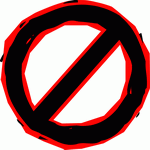
If you don’t have the time for another client at the moment, it’s important to be able to realize it and say no. It is the most fair thing to yourself, your existing client and the new ones that knock on your door. Worst case scenario is saying yes to too many and it having consequences for existing clients. You always want to make sure you have enough time to give your current clients the best service you can. A client too many could be the thing that lowers the quality of all your work.
6. Make a blog/website
In this Internet age that we are, having a website of your own can mean a whole lot. Not only does it make you look more professional but it is also a gateway to new clients. Many do surf the net to find people for their next projects and if they can’t find you online they won’t know you’re there.

7. Update your website regularly
Do you already have a website or blog? – great! But to maximize its value to you it’s very important to update it regularly. If new clients visit your site and see that you haven’t updated the content for a very long time, that might just be the reason for them to choose someone else instead. Updating regularly will require an hour of your time every now and then but can pay back multiple times rewarding you with new clients.
8. Give your online visitors something free
Giving something extra to the visitors on your website always is a good thing. If you work as a designer you can for example consider putting up some free textures or buttons. This will give your site more visitors and potentially more clients for you. Or how about offering every visitor a percentage off on their first order with you? Again, this could be the extra thing needed to stand out to new clients.
9. Use social media
Social media is where many relationships are made these days. No matter which country you live in, using social media can connect you to potential clients and partners all over the world. Twitter is a must, and you should consider Facebook and also forums related to your business. If you are a designer consider having a look at deviantArt and YouTube as well. In several of these media you can advertise for your own business as long as you make sure to not spam it too much.
10. Get allies
Having allies can mean everything. Connecting with people through social media or even spreading the word of your business through friends and family can get you just that word out there that you need. Also making relations with people who can do things for the clients that you can’t can help, you give the clients a more complete package of what they need. One day you are the one sending a client to an ally that can offer a more suitable service in that case, the next day you could be the one having clients sent your way.
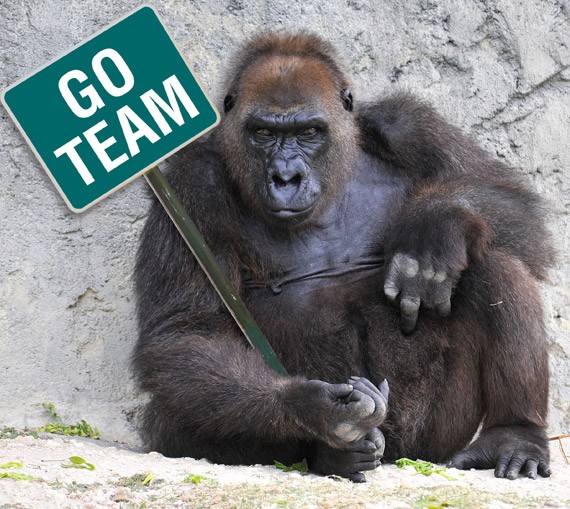
11. Save for rainy days
Even though your business may go really well, there can and probably will come a bad month or two every now and then. Being a freelancer is being vulnerable to changes in the market. My advice would be to save up a little bit of your income each month, save it in an own savings account so that you have it as a safety buffer for when times get rough. You sure wont regret doing that. It would be a shame if a couple of small bills would ruin everything for you in a bad month.
12. Be creative
There are many ways to be creative, to get new clients or to make better use of equipment and office space. Some examples can be to upgrade an existing computer if you can’t afford a new one, redecorate a spare room if you can’t afford the rent for an office outside of your home. Add a new product or service to your current list or ask friends or family if they know anyone that may be in need of your services. The options are many, all you need is to try think a bit out of the box
13. Reward loyal customers
If the market is tight you need to do what you can to have your customers back a second and third time. Being friendly and service minded is always a must, but what about giving them a discount the second time? Or sending them special offers of various kinds. Use your fantasy and implement these things into your business plan. Make customers want to come back and you will have the best possible chance to survive.
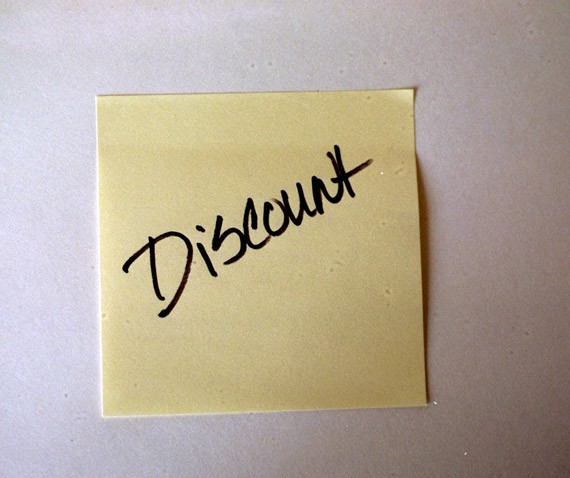
14. Treat every client as if he is the only one
Giving existing customers good offers as mentioned in the previous tip is important. But remember to be service minded. If a customer feels important that will make him more loyal as well. Use positive language when you talk or write to him. Don’t be afraid to say that you will go out of your way to make sure he is satisfied with the product/service he is getting. And remember to let him know that feedback is appreciated. That way you can keep making your services more and more attractive and get happier clients. Don’t forget that existing clients can be the best advertising you ever get!

15. Work when you are at work
If you have decided to work from lets say 8am to 4pm every day, then do so. If you have errands to run, private mail accounts to check, private phone calls to make and so on, these will quickly eat of your much-needed work time. Make a promise to yourself to only do this when you are not supposed to work, as in before or after work or during your lunch break. It may not seem that much to you, but I’ve seen several great freelancers getting their days completely messed up because they were not good enough at managing their time properly.
16. Know when to start and stop
Just as important as actually working when you are at work, is starting when you should and stopping when you should. You may have to prepare yourself for working extra hours every now and then to keep your business alive, but it is very important that you have free time too. You need to recover and get your mind filled with other things or you will get burned out and ruin things for yourself. The more hours you work at once, the less productive you get. So remember to follow your own rules on when to start and stop the day at work.
17. Keep your finances tidy
Keeping your finances tidy probably sounds easy, and it can be – as long as you keep an eye on them regularly. No matter how small a business you are running you will run into trouble if you only spend time on billing and accounting once or twice a year. Set up dates for when you pay your bills, when you send out invoices to clients and to make monthly budgets. Not only will this make it easier for you throughout the whole year but you will be able to fix errors quicker, do adjustments if needed and so on.

18. Remember to breathe
Breathe you say? Yes ;) And by breathing I mean that you need to take care of yourself. You may be freelancing using a computer or two, a camera or other tools, – but the most important tool will always be yourself. Remember to continue to spend time on your hobbies, friends and family even if you have a busy work schedule.

19. Get out of the house occasionally (especially if you work from home)
If you have a home based office it’s important to get some fresh air. Book some of your meetings somewhere else, meet business partners for lunch, or spend an hour or two working from a library or coffee shop with your laptop if you can. The change of scenery may boost your energy level/creativity and give you a lot back.
20. Make an inspirational string
Rough days come and rough days go. Simple as it may sound, having something around you to remind you of why you are working this hard can be what you need to get some extra energy on that one difficult day. Make your own inspirational string! Take a piece of string or use a cork board/whiteboard, whichever you have available. Add a picture of your kids, of the vacation spot you are saving to go to, or maybe a car you hope to be able to buy. Add some of your favorite inspirational quotes or pictures, whatever inspires you really. And there you go, your own inspirational string! Taking a look at it when you are close to giving up or when a day is extra stressful can work wonders for you. You should give it a try :)

21. Be humble
No one is born an expert or world champion. If things go well or you feel on top of things it can be easy to get a little bit too confident, which can be bad for your reputation and bad for the quality of your work. You should always aim to be humble, listen to your clients on what they want. Give them your professional opinion when needed but in the end it is the client that generates your paycheck. Also remember to willingly take advice from colleagues or others who have been in the market for a while.
22. Look professional, in every way possible
You have the logo, the website and so on and things are starting to look pretty good. Remember to also meet clients with respect, look presentable and be polite. Being your own boss doesn’t mean you can talk or act in any way and still keep your clients. Remember that.
23. Ask for feedback
Not only should you have comments enabled on your website but you should also ask your friends/family/allies for feedback on your work. And most important of all, after you have finished your project – ask the client what he thinks. Not only do you get a great chance to improve but the client also feels important. Getting someone else’s opinion is always good and this will help you to become even more successful.

24. Always carry a notebook around with you
It being a normal notebook, your iPhone or any other digital form of “notebook” you should carry it with you and remember to take notes. This is for many reasons. Not only can you unexpectedly run into a potential client or an existing one, but you may come up with valuable ideas when you are on the bus, on the plane or basically anywhere else. Several times have I had amazing ideas, not had a notebook, forgotten the ideas and seen them used somewhere else a year later.

25. Take the time you need!
This is so important, it can’t be mentioned enough. Same as with the tip about learning to say no. Once you have said yes to a project you need to make sure that you take the time needed to do the best you can do. Handing over a project that is half done will not only give you a client who won’t come back, but it can give you a bad reputation. Your clients are your best references to show in the future and no one want a freelancer who leaves the work half-finished.
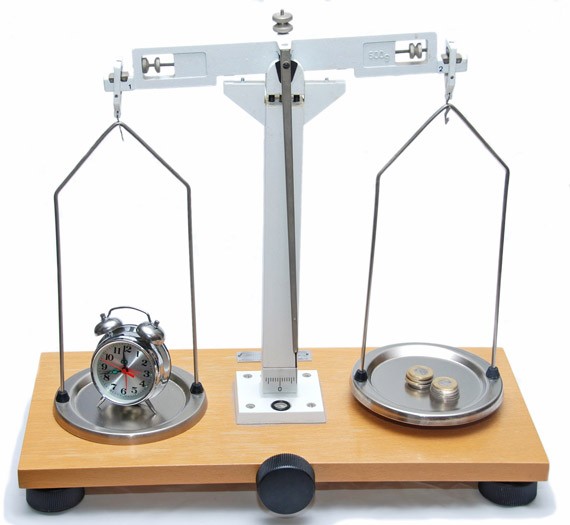
Feel free to leave your own tips or feedback using the comments, and good luck in the world of freelancers! :)
We have mentioned in the beginning, now let us take a look at, what do you need to know to double your design rates.
The Knowledge That Will Double Your Hourly Rate As A Web Designer
Let me tell you a story of a $100 nail, which will change your whole perception about how much you can charge as a freelancer or service business owner. If you will get this story and article right, your freelance design rates and happiness levels will skyrocket. If you won’t you will keep competing in the bidding wars never being able to make just enough money to have a proper living. Let’s get to the story..

Clients will pay you for the results you deliver.
How Can I Possibly Increase My Freelance Design Rates?
One man had a gorgeous parquet floor in his house but one day it suddenly started creaking.
Every time someone walks around the house would make loud creaking sounds which irritated this man a lot.
At first, he tried fixing it himself by rearranging the furniture. Then, he called the guys who made his floor and had them take it apart and put it back.
But nothing worked because the creaking continued.
Someone told him about the best carpenter in town and so he invited the man to his house.
The carpenter walked around the house for a few minutes and listened carefully to the creaking sound that came from the floor. Then, he took a tiny little nail and hammered it between two sections of the parquet.
The creaking went away.
– “That is amazing! How much do I owe you?” the guy asked.
– “A hundred dollars,” replied the carpenter .
– “You mean I am going to pay you a $100 for one tiny nail?”
– “Of course not. You’re only paying 10 cents for that nail and $99.90 goes for my knowledge where to put it.”

Think about how you can deliver better results to your client.
What Are You Getting Paid For?
The hours you spend designing a website for someone are the hours of Your Life that you can never get back. So when you sell a part of your life to someone, you want to sell it at the highest price possible.
The question, therefore, is: what makes a web designer charge more per hour and how to increase your freelance design rates?
It’s the knowledge! And the lessons you learn when applying this knowledge.
The knowledge that makes you solve the problems of your clients.
If you understand the goals and the pains of your clients and you have enough knowledge to address them like no one else, you can charge a lot higher rates for your freelance design work. Just like the carpenter from my story.

Think how to add more value to your service and your client.
You Should Have Your ROI As A Web Designer
Why do people launch websites anyways?
They launch websites because they want to make money (in most cases).
So instead of designing a “good-looking picture,” you should be designing a “profitable online entity” that will help your clients achieve their business goals.
You can easily persuade a person to pay you 2x more if you explain him that with your design he will easily return that money in a few days. That’s your ROI.
“Cheap designers create what the client asks them. Expensive designers create what the client needs.”
You have to familiarize yourself with all the ins and outs of the business your client intends to put online and create a perfect website that will give your client the results he needs.
If you’re able to create a website that will bring tons of money to your client, he will happily share some of that money with you.
Learn To Design For Conversions
If you’ve never heard of CRO (Conversion Rate Optimisation) I guess you’re not getting paid a lot for your design work.
What’s the point of having a website that does not convert visitors to fans, leads, or sales?
Different websites have different goals but, generally, they can be divided into three groups:
- Designed to make you stick and regularly come back:
- Designed to make you opt in for something. This can be a free service, a trial period, or email updates:
- Designed to make you buy something:
You, as a web designer, should study some psychological principles and conversion optimization best practices to make sure your design is perfect for achieving the business goal that it was built for.
A good example would be this eye-tracking study from ThinkEyeTracking:
Predict where people will look and ensure design converts.
- Before (eye looking straight ahead): Only 6% of 200 usability test participants looked at the product.
- After (eye looking towards the product): 84% of usability test participants now looked at the product!
A few pieces of knowledge like that would easily impress your client and persuade him that you’re well worth your money.
Where to start to learn about conversion rate optimization?
If you’re totally new to this, I suggest you read the book Web Design For ROI. Then, you might want to become a regular reader of ConversionXL blog, because they are one of the best resources on CRO so far.

Design for conversions, results.
Learn To Design For Usability
If you’re still thinking about websites as a bunch of static HTML pages, you’re way too old school my friend.
Today a website can be just about anything: a social network, an online community, a blogging platform, a web tool, a crowdfunding platform, etc.
New start-ups emerge every single day and there is a learning curve to every one of them. If that curve feels comfortable, people will stick. But if it’s not, you’re out of business.
The way you make the learning curve painless is by applying usability principles to your design.
A good example would be the navigation menu of the website you’re designing. There’s a good chance that many people will land on some internal page and if you hide the navigation menu from them in a “not-so-obvious” place, they will bounce. That is why the vast majority of websites has the navigation menu at the top of every page. Read more about common navigation menu mistakes at KissMetrics article.
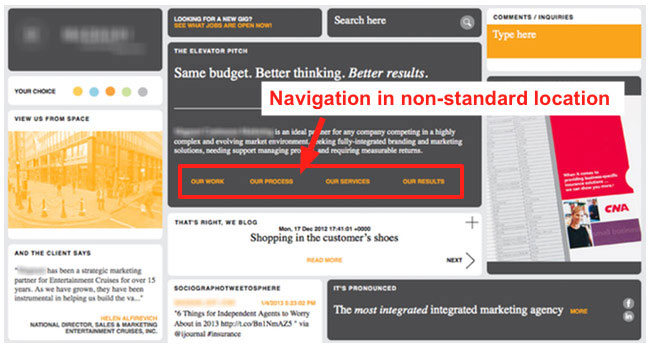
Don’t underestimate user friendliness in the website.
Another important thing to keep in mind is the device that people will use to access the site.
According to Mary Meeker, mobile usage now accounts for 25% of all web traffic in 2014. That is up from 14% a year ago. This means that some knowledge about responsive design will instantly make you a more expensive web designer.
Where you can start?
There’s an awesome book by Steve Krug called Don’t Make Me Think and once you’re done with it, go read some articles of Jacob Nielsen because he’s considered as one of the pioneers of usability.
Learn To Design For Readability
It amazes me how many designers don’t pay attention to text content.
I’m a huge fan of typography and I believe that a good selection of fonts can breathe some charisma into your website.
Just think about it – every major brand has its own unique font but that’s only the tip of the iceberg.
Did you know that the optimal width of text content is about 600 pixels (or 100 characters per line)? That number comes from research by Mary C. Dyson called “How Physical Text Layout Affects Reading From the Screen”.
To me, this looks like a perfect bit of knowledge to impress your clients and ask more for your design work.
And there’s so many other stuff you have to consider, such as typeface, size, spacing, line height, subheadings, paragraphs, etc. All of that makes the website more readable, and people stick longer and convert better.
Now, do you know who else used to be a huge fan of typography?
“Because I had dropped out and didn’t have to take the normal classes, I decided to take a calligraphy class to learn how to do this. I learned about serif and san serif typefaces, about varying the amount of space between different letter combinations, about what makes great typography great. It was beautiful, historical, artistically subtle in a way that science can’t capture, and I found it fascinating.”
– Steve Jobs
Where to start?
I haven’t heard of any good books on typography and designing content (maybe you can recommend me some?) but I sure know some amazing websites on that topic:
Time To Become Smarter
I hope you resonate my idea that becoming more knowledgeable in your field is a perfect way to earn more money and be able to increase your freelance design rates while cutting your working hours.
Do you have trouble while freelancing with getting enough design projects?
Check out this eBook, where you will learn Top Ten Practices to Maximizing and Gaining Projects with High-Paying Clients.
In fact, if you look at the richest people in the world and their habits, you’re going to discover that they love to self-educate:
- 63% of them listen to audio books during commute;
- 88% read 30+ minutes each day;
- 86% believe in lifelong educational self-improvement.
For example one way to leverage your knowledge is by learning to use better tools, so you can work faster.
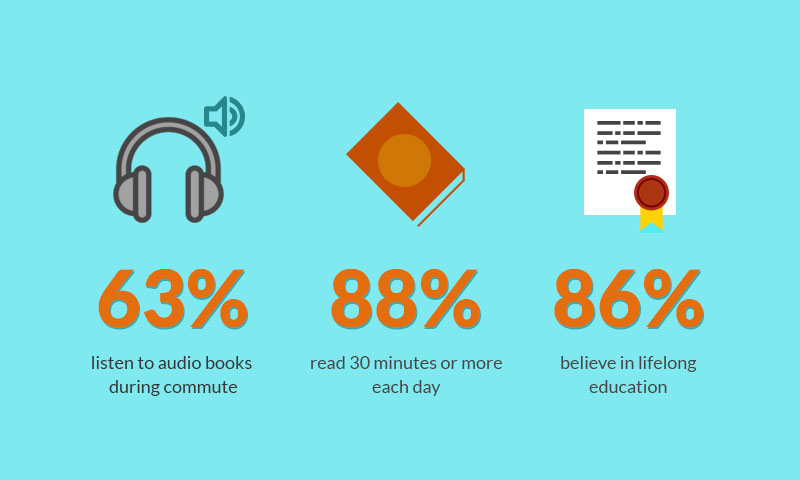
These numbers come from an awesome infographic called “Habits of the World’s Wealthiest People”.
So, I guess now you can see the pattern.
This section has been written by Tim Soulo, Friend and Premium Content Partner of 1WD.
In case you’re looking for some great business / life / productivity advice, I encourage you to download my free ebook called “15 YouTube Channels That Make You Smarter” and let me know your thoughts on this article in the comments below.
Now let’s take a look at some time management tips for freelancers.
11 Awesome tips to Work without Distraction
In this section I aim to give you some tips on how to be able to work better, undisturbed by everything that is going on around you. Depending on what you work with it may some times be a big advance to be able to work without the interruption from Facebook, e-mail, texts, TV, radio or other things.
1. Make rules

Picture by Lavinia Marin
If you work from home and/or as a freelancer it takes a lot of discipline to be able to work as efficient as you should. The good thing is that you can set your own work hours, but it requires a lot of discipline to work out. My hottest tip on this subject is to make yourself an hour-to-hour timetable for every day. I use the first hour of every Monday to plan the rest of the week. That way it is a lot easier to get a full overview of what needs to be done. Looking into some sort of time management application can be very beneficial aswell.
2. Choose what can disturb you (and when)
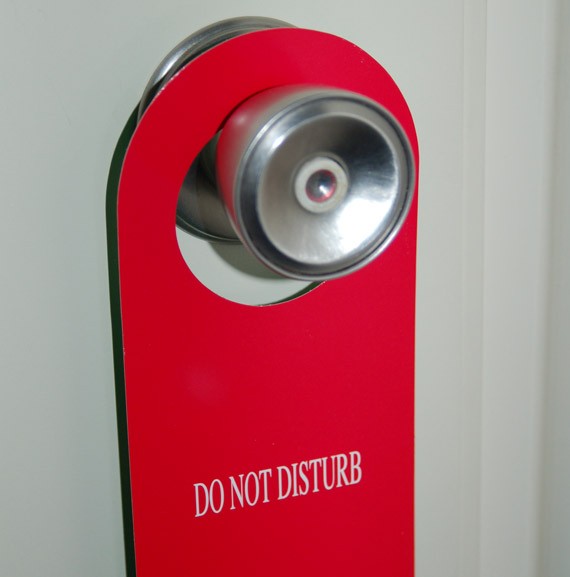 It is important to look through your routines and decide what you can allow to “disturb” you. The more unneccessary applications you have open at one time, the bigger chance it is to lose quite a lot of time to that during the day. Don’t be on Twitter, Facebook or similar services unless you have to. If you must check them during the work hours, at least make sure to do it at set time. Same with e-mails and phone calls where you can do certain adjustments too.
It is important to look through your routines and decide what you can allow to “disturb” you. The more unneccessary applications you have open at one time, the bigger chance it is to lose quite a lot of time to that during the day. Don’t be on Twitter, Facebook or similar services unless you have to. If you must check them during the work hours, at least make sure to do it at set time. Same with e-mails and phone calls where you can do certain adjustments too.
Picture by Pascal Montsma
3. Turn off the tv and/or radio

Picture by Vince Petaccio
Unless you for some reason work better when you have the TV or radio on, you should just turn it off before you start working. It’s very easy to be distracted and during a week the this can steal a lot of valuable time away from you if you’re not careful. Some people work best with the radio on in the background, but be careful. Try radio stations that only play music, iTunes, Spotify or Antenna. Just remember that if you have anything turned on in the background, it should be something that doesn’t draw attention away from your work.
4. Answer mails and DMs to specific hours
Once you start getting a few mails directed from your website, ongoing projects and so on, you will see that it can quickly take your mind off what you were doing in the first place. If you decide to look through and answer these one or two times during the day, you will soon feel that your workflow gets a lot better real quick. Same goes for Facebook and Twitter messages, along with other kinds of social media. Decide when you can reply to these and do it that way.
5. Eat at set hours

Picture by Foxumon
Food is important to be able to work well. If you are too hungry or too full it’s harder to focus on what you are doing. The breakfast is the most important meal of the day – always take the time to eat properly in the morning. If you feel you don’t have time to eat properly before you start working, then get up 15 minutes earlier instead. Having a set time for lunch as well, is a good thing for both your body and brain. If you don’t have set hours for eating it can affect the workflow in many ways.
6. Work when you work (everything else should wait)
Keep private errands away from your work schedule. You would be surprised if you realized how quickly a little private mail, phone call or errand eats quickly of your work time. Decide that you will leave everything that is not work related until the afternoon when your day at work is over.
7. Make the best surroundings for yourself
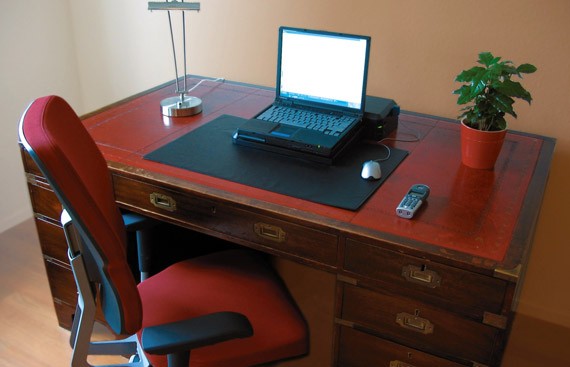
Picture by Henk L
If you sit more or less all day in front of the computer, you have to take a look at your surroundings to make sure you get the work done the best way possible. Make sure your chair is good, that the room isn’t too hot or cold and don’t leave old coffee cups and mess all over your desktop. A little “mess” can be good for your creativity, but try to keep it at a decent level. Remember to get up off your chair for at least a few minutes every hour or so to get your blood flow going.
8. Software settings
If you write a lot, I would recommend a program like jdarkroom where the program can be used in full-screen to not let you be disturbed by other programs or system messages that may pop up. Set as many programs as possible to work in full-screen as it can really boost your workflow. If you have set your system to do timed defragging or backups/virus-scans, try to have these run either in the background (if they can) or set them to run when you are not working.
9. Upload and tag in bulks
If your work requires uploading files/art to various websites, I suggest that you do this in bigger amounts at a time. The same goes for tagging files you import from your camera or elsewhere. By doing things in bulks you get way more efficient. Instead of getting your workflow disturbed by uploading or tagging one thing at the time you will get more done in less time, and keep those tasks from interrupting other parts of your work.
10. Say STOP
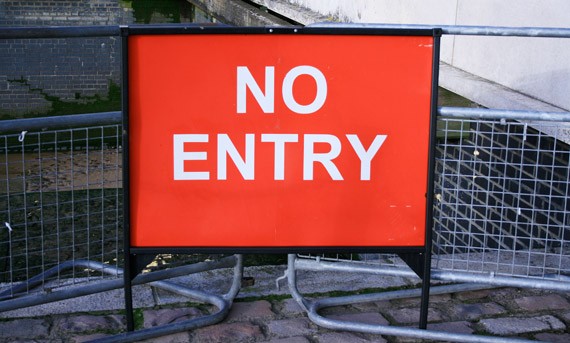
Picture by Leslie Watts
When working from a home office it’s important to have the ones you live with understanding that when you’re in there, you’re at work. If you have someone else in the house while you’re working, you may need to have a conversation to them about this. Explain that you need to be undisturbed when you’re in there to be able to get things done. Even if they don’t understand it, at least make them respect it. Set up some rules for when you can be disturbed and not. Keep the door closed if possible.
11. Be consistent
When you’ve made your rules and changed all software and such to fit your plans, the hardest part comes. Now it’s time to actually follow through. Try to stick to your plans no matter what. Obviously there can be very rare situations that can be “excuses” to not follow your daily schedule, but these should be very rare.
 Picture by Zsuzsanna Kilian
Picture by Zsuzsanna Kilian
Those were my tips on how to be able to work undisturbed. Most of these things are very logical but easy to forget in the heat of the moment. I hope you found this useful to you in your situation and invite you to share your own tips and feedback in the comments.
Thank you for reading! :)
Now that we know more about time management, let’s have a look at the harder part of this subject. How to keep your deadlines?
Prepare For Challenge: How To Keep Deadlines
If you work from a home office as a freelancer, deadlines can be challenging to keep unless you prepare well. Having failed many times due to various reasons I decided to make a recipe on how to be able to keep deadlines.
1. Be realistic!
First of all it’s crucial to make deadlines that you can actually keep. Setting the deadlines too short is the first and most common mistake to make. You may want to work with the speed of light every day but sometimes that just isn’t possible. Your client doesn’t have the insight to your workflows the way you do. My rule is to always set a day or two extra compared to what you first think. That way you always have room if something unexpected comes up.
If you are finishing earlier it will be a positive bonus for both you and the client.
2. Good communication

Picture by Nathan Green
Make 100% sure that both you and the client have the same expectations regarding the actual deadline. This is to be able to get everything that should be in the project included and avoid last-minute crisis. You should also have ongoing communication with the client and send him your work or at least parts of it along the way if it’s a longer term project.
This way you will end up with what the customer wants instead of getting longer and longer away from his goal.
3. Write it down
Write down the deadline you’ve decided with your client on. Put it on a sticky note, make a reminder on your computer, put it in business plans and time management applications. The fact that you actually care about the deadlines is a very important one, so make sure you get them written down multiple places.
4. Plan ahead

Picture by MagicMarie
I plan each week in the beginning of the week to make sure I get the needed hours to work on all the projects I have to get done. If you have a deadline to reach, it’s important to get time to work on that project on a regular basis. The end result will be better if you have good time, compared to sitting up all night that very last night to get something finished.
You should make an overview of all the current projects you work on and divide them into weeks and days. This way you keep track of both the bigger view and the details.
5. Be your own boss

Picture by Sanja Gjenero
Be as strict to yourself as you would be to any other employee. Have expectations to yourself and don’t accept any slack along the way. Being a bit hard on yourself both considering quality and being able to keep the deadlines is not a bad thing. Just remember to pat yourself on the back when you do well.
6. Checkpoints
Set up checkpoints along the way. Make a list of goals for each project, so that you can see how far you’ve come and what you have left. Once you get a handful of different projects going on at the same time you, will find this very useful. Set specific dates for where to start and stop on the smaller parts of the projects. Once you use terms as “that part should be finished within a certain week or month” it will be easier to fall behind with your progress. Have specific dates set to evaluate and finish each part.
7. Manage your time

Picture by Ivaylo Georgiev
A list of goals within a project is a great way to follow the progress along the way as in mentioned in #4. To be able to do this well you should consider getting some sort of time management application. For those that have flawless discipline, routine and experience – maybe it isn’t necessary. But I would say that I believe at least 75% of us would be more efficient using an application or detailed schedule of some kind. Have a look around at which ones are available for your operating system. The apps come for all platforms, including some phones aswell.
8. Focus on one thing at a time

Picture by Abdulhamid Al Fadhly
If you have divided the projects into smaller pieces of work, it’s important that you are able to focus on one thing at a time. Don’t spend too much time thinking of the next steps or challenges unless you have to. Focusing on one thing will make it easier, have you work more efficient and keep the timeline.
9. It doesn’t hurt to be a bit ahead
If you have available hours at slow or dry times, you can use this in the advance of this project. Beating a deadline can impress clients a lot and even leave you feeling better and more confident.
10. Well-defined goals
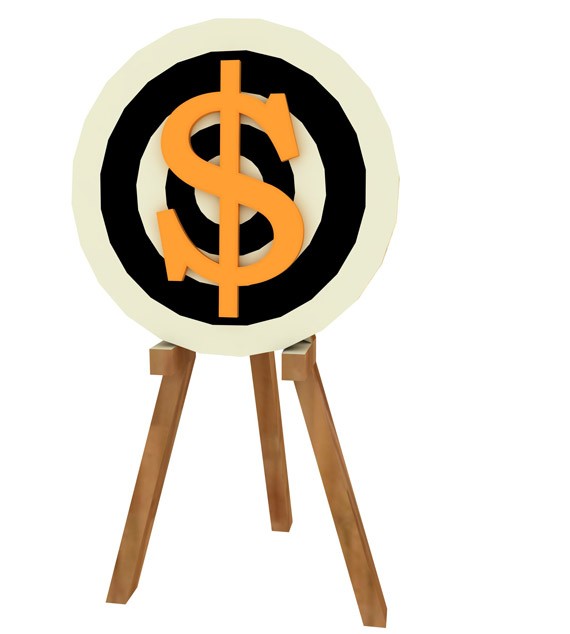 Picture by Svilen Milev
Picture by Svilen Milev
To avoid having to do a lot of extra work in the last-minute, you should aim to have a very clear definition with the client on what the project involves. Make sure to have a written agreement where you get as specific as possible on what exactly should be done by you to make the client satisfied. If you right before a deadline realize that the project includes things that you thought weren’t supposed to be in there, you are in for much stressful work in short time. This can eventually be what breaks your deadline.
11. If it’s broken, Fix it ASAP
If you come to a point where you realize that you will not be able to keep the deadline you’ve set already, you need to let the client know As Soon As Possible. This way you can avoid many problems and save your reputation. We can all do mistakes and things can occur along the way, so most likely your client will understand it if you are being honest. It’s important to keep track of your progress to be able to see these things in advance. That way you can try to work with the client on making optional solutions. Also make sure that when you first set a deadline and land a deal with the client, you specifically mention that unplanned things can occur which may cause delays.
12. Extra Effort when needed
 Picture by Miamiamia
Picture by Miamiamia
If you have ended up a bit behind schedule, you need to be prepared to do some extra work to make up for it. Even though you don’t want to work 24/7 for the last days of a project, you have to make room for extra work in periods if needed. This means that sometimes you may be having to work extra hours late or during weekends and holidays. This is what life as a freelancer is like. If this happens often you have to look through your routines and workflow to adjust them better.
Another tip on this point is that instead of working an hour or two later it can of course be a better plan for some of us to instead start earlier in the morning. Some of us work more efficient in the mornings.
13. Need help?
Sometimes on huge projects there is a chance that you won’t be able to do everything completely on your own. Maybe in some cases the client and you have a contract where you get less paid once you’ve passed the deadline with a number of days. To prevent this it can sometimes be necessary to hire other people to help you out on some parts of the project. Remember to always be realistic in the planning. Sometimes you may just have to do what is needed and paying someone else to help on certain tasks can be necessary.
14. Evaluate at the end
 Picture by Ilco
Picture by Ilco
Learning from your mistakes is the most important lesson to take with you from each project you’ve done. You get better from experience, so remember the importance of evaluating after each project. Make a list of the things you did that were great to be able to do them the next time too, and list the things that didn’t go too well in order to improve on your next project.
I hope you found these tips useful!
Please feel free to leave your own tips in the comments section along with whichever feedback you may have.
In the next section we will see how quickly the perception of web design is changing in the bigger picture.
How the Web Industry is Changing STEM’s Perception
It is quite easy to see that a web professional fits into the technology sector of STEM, but is that all there is to the web profession and STEM relationship? To think that the web professional industry, including graphic design, is just a subcategory is the worst assumption anyone could make.Those that have chosen to be a part of the web industry as a profession are doing quite a lot more for STEM, and future entrants into the workforce, than is shown on the surface.
What Is STEM
Okay you now know that STEM stands for Science,Technology, Engineering, and Mathematics, and that it is a collective of career fields that are shaping the future of our world. However, lets take a deeper look at STEM and why you as a web professional should be more aware of it. STEM is an American born coalition that came about as a way for these respective subject areas to better be promoted to K-12 school children, who are continuously growing disinterested annually according to the most popular majors in college.
A nation’s STEM workforce, in many ways, is a strong indicator of how well a nation can now sustain itself and how well it will fair in the global economy in the long-term. This is more so evident when looking at the top developed nations, and those that are underdeveloped. Despite this importance, STEM careers are still not gaining any popularity with the majority of youths today. The typical assumption that these fields are only for math lovers, frantic computer enthusiasts, and anyone else that was considered weird or geeky in high school.
How is the Web Industry Helping
Well, thanks to the web industry that awful assumption that clearly belongs back in the 80s is slowly changing. Web professionals are doing a great service to change how STEM is being viewed, and is a clear embodiment of what STEM is all about.
Adding Creative Outlets
STEM at a first glance, is clearly not the first choice for someone looking for a career with some creative space. However, that is exactly what the web professional industry brings to the table. As web professionals, we use a unique combination of high level computer savvy and creativity everyday in our work life. Graphic designers, web designers, UX designers, and web developers(yes there is a creative aspect here as well), there is an assortment of career choices here that easily could entice anyone with creative ability to come and have a happy career. Of course that happy career would be minus the typical work related client stress of the typical freelancer, but I digress.
Inspiring Constant Innovation
Honestly, how long is anything really current in our industry? The minute something comes out, there is already a group of people either trying to push it to new levels or trying to create the next trend. In actuality everything that we are doing now, is probably becoming an outdated practice and/or trend as you’re reading this. However, by no means is that a bad aspect to the web industry. This constant need for growth and exploration is exactly what it takes for a nation’s economy to become successful. Our industry’s need to further push itself to be better, and try things whether they turn out to be good or not, is exactly what makes it so special and why it never will go away. Instead it will grow and adapt to whatever environment the future will have in store.
Encouraging Entrepreneurship
The web industry is all about entrepreneurship, and being able to make a living off of your own terms and conditions. The majority of professionals in our field are either freelancers, aspiring to be freelancers once they build a good enough client base and experience, or want to start-up their own big time agency. The best part is that all this is encouraged! There really isn’t another field with as much open room for growth and self sustainability as the web industry, and that is exactly what other STEM career fields need to learn from.
Bringing the Importance of Aesthetic Value
The common person in a STEM related career doesn’t have a strong grasp for the importance of how important the aesthetic value in what you do. In actuality, it’s really just as important as how well you do. For an example, lets look at an accountant. Imagine bringing all your financial documents to this person and just say, “Balance this out for me.” Of course they do it, but when its done it is presented to you in an unattractive way and is quite hard to fully grasp if you are not an accountant. Now take that same job and give it to an accountant that understands aesthetic value. This accountant does a better job in presenting the information, his clients are better able to understand and enjoy it more, thus making them happy and him elbow deep in referrals.
It is quite sad, but the average person is more drawn to what looks best automatically, rather than what is possibly better than them. This is clearly shown in the more popular consumer electronics, or anything produced by Apple. As web professionals, we know all to well how important it is to make sure that your work is presented in a way that is appealing. There isn’t any way possible that a web professional could go one full day in their career without having to adhere to this. Because of this sometimes dreadful aspect, only when dealing with less than pleasant clients, web professionals are showcasing the importance of making sure what you do is presented in a way that is informative as well as appealing. In addition, we bring an importance in the appreciation of art.
What to Take Away
Being in the web industry is a one of a kind experience. Professionals here get a taste of creative expression, innovative openness, and entrepreneurship. These are the exact qualities that are needed in a workforce to drive it to self sustainability, or maintain it. Being a web professional is a unique experience, and it is that uniqueness that is creating a completely new identity for a career group that is so vital to a nation’s future, but lacks aspects necessary to draw enough attention to itself to the masses. That lacking presence is provided by the web industry, and all the professionals that make it up. So next time someone asks you, or just assumes, the ease at which your career can be handled, you just tell them that its my career that is stimulating future growth in an industry that will make or break an economy to the young school children minds.
As a freelancer you are under a lot of pressure, so sometimes to be fresh it’s a good idea to take a break. Let’s explore that in the next section.
Why You Should Take a Web Break and Explore The World
Don’t take me wrong; a routine is a good way to organize your life. But any routine you don’t leave is prison too, and sometimes, taking a break is all that you need to burst free and soar high.
My point: At times, you have to pack your things, travel the world and get the heck out of anywhere you are right now.
Travel to Become a Better Designer
Although there is no direct correlation between traveling and becoming a better web designer, going to places can teach you a few important lessons about your chosen career path:
-
You get your dose of international experience

One of the many queer but amazing things in web design is that it encompasses location, race, culture and even language. Because the Internet covers the whole world, basically, your clientele come from different parts of the world. That’s just how traveling is.
When you get to different places:
- You get to have a peek at the culture of the place you have visited.
- You get an idea at how people speak in context, what offends them and what makes them blush (yes, you have to make your clients blush at times, it’s a part of persuading them to hire you).
Let’s take this example: you have a new client from Brazil. He wants you create a website that targets Brazilians. Of course, you can do research on that but nothing beats first-hand experience. If you happen to have set foot in Brazil, then you’ll have a great head start with the project.
-
Talking won’t be a problem anymore
Face the truth: interacting with your clients can sometimes be worse than trying to talk Godzilla out of attacking your city. But talking to clients is a must-do because you both need to know and understand what the project is about and where it’s heading.
What you will learn when you travel is that you can’t enjoy your stay if you don’t start talking. Traveling is visiting a place, alright- but it’s also visiting people, talking to them and getting to know them.
Travelling often can make your people skills skyrocket. You becomes better at understanding people. By talking to the locals, you will be aware of how they say things and be able to connect with them. Now, this can help you in the future when you start dealing with clients.
-
You become a more curious and creative person

When you travel, you step foot on a place unfamiliar to you. That is when you begin to explore, and be creative at things you do.
You try out new things, take risks and turn out to be happier at the end of every vacation.
Now, what does this have to do with web design?
Curiosity and creativity are two things you need to have if you want to make it big in web design. Traveling can give you these things in the most natural way possible. You have to be curious of what’s happening around you. A fully functional mind is the one that asks. As a web designer, you have to possess immense curiosity about your field. You need to ask yourself questions like:
- How does this jQuery plugin work?
- How did this web designer do this?
- What are the latest trends around me?
These questions will help you learn more. In an industry that evolves on a daily basis, learning fast and being curious about what changes is surely an ace you can drop any time of the day.
You also need to be creative. Of course, this is a giveaway. Web design is anchored in art and there will never be art without creativity.
Your travel experiences can teach you to be more creative. You will be sharpening your mind in thinking more and asking yourself, “What if I did this?” This question will make you want to try more things and end up learning the results. In the future, you’ll surely know how things work.
-
You will be able to deal with discomfort

Traveling can be uncomfortable at times. Sometimes, you get short of budget or delayed on a flight. There are times that you also get uncomfortable being alone, or feel out of place in your hotel room. But these are all part of the fun that you are going to enjoy.
When you’re traveling, a little discomfort won’t kill your vibe because you know that there is so much fun to miss just because you felt uncomfortable. This can pretty much reflect web design. Sometimes there are small roadblocks that go on your way: bad clients, no projects little earning or design blocks.
But everything is all part of the fun that you are going to have and if you stop now, where will you be when the fun starts?
-
You will be more organized

Organization plays a great part in being a traveler. You have to organize everything from the budget to packing your clothes. Otherwise, your getaway might turn into a series of finding things you lost and ending up staying in your lonely hotel room all night.
What does this have to do with web design?
The answer? A lot. Organization is very crucial to a web designer.
In your projects, you have to face issues with organizing your time, your projects, your money and most of all, your ideas. You also will have to organize your template folders, your UI kits, your mock-ups and of course, your code. We all know how important these concerns are. Else, your design career will end up in a series of scrambling for bugs in immense lines of overly confusing codes.
Tips to Make Your Vacation Unforgettable
-
Leave your worries at home

You’ll never enjoy your vacation if you keep on thinking about something that you forgot to do. That is why before you go on flying on a jetplane, you need to get things done before you leave. No loose ends.
-
Travel Light

Roll your clothes so that they can save luggage space. Also, don’t waste money and effort in bringing things you don’t need. Remember the minimalist principle: Take only what is essential.
-
Talk to people and try new things out

Be creative, curious and adventurous. Don’t let this getaway pass without trying the fun things. Else, you’ll bring home the thing they call i-should-have-tried-that souvenir.
-
Make friends
Try to be with the locals. Interact with people in the place and get to understand their ways and their culture. Remember that it’s cheaper to have a friend tour you in the city rather than a tour guide.
-
Travel alone, if you can

I would gladly recommend this. Travel alone, you guys. You can have the best experience when you travel alone. Yes, the downside is you have no one to talk to. But that is also the best part of it. Because you are alone, you will surely look for new companions, and better companions.
-
Take pictures, write journals

Remember to document your travels. Take pictures for your followers on Instagram. Write journals and transfer them to your blog!
Places You May Start Visiting
Upon reading this article, you may have thought of packing your things and exploring the world. But the question is, where will you start? There are a few places here that are not often mentioned when must-go-to’s are talked about but they are equally jaw-dropping scenes. Try starting in one of these destinations and you’ll see why they are included here:
Salar De Uyui, Bolivia

Reed Flute Caves, China

Antelope Canyon, Arizona, United States

Bigar Waterfall, Romania

Sea of Stars, Vaadhoo Island, Maldives

Image from Flickr
Zhangye Danxia Landform, Gansu, China

Tunnel of Love, Klevan, Ukraine

Glowworm Caves, Waitomo, New Zealand

Image from Flickr
Lake Hillier, Australia

Image from Flickr
Meteora, Greece

Angkor Wat, Cambodia
Yosemite Valley, USA

Hitachi Seaside Park, Japan

Bamboo Forest, Japan

Tulip Fields in Netherlands

Mount Roraima, Venezuela/Brazil/Guyana

Now let’s continue more in the business way of this article. In the next section you will learn how to design your pricing plan.
Design a Pricing Plan Using CSS3 in Under 15 Minutes – Downloadable
If you own a product which you sell only on a subscription basis, then you will probably need pricing tables in order to showcase your product and the purchase options better. This tutorial will teach you how to do that.
At the end of the video I also make a promise to you regarding what am I going to come with next time. Sneak peek: it’s for mobile.
Until next time, I hope you enjoy the video and, as always, I am looking forward to your feedback and comments.
Comparison Table Preview
By the end of this tutorial you will be able to design a pricing plan like the image below.
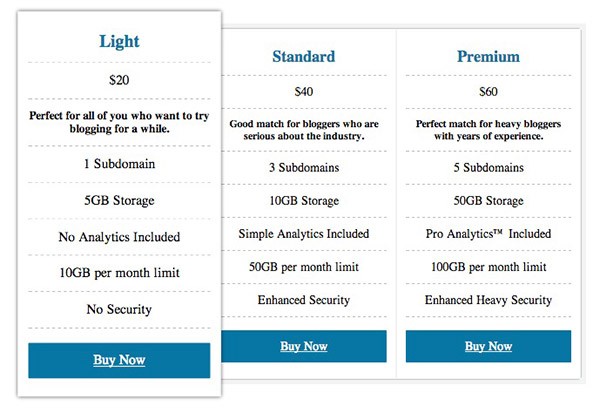
[demo source=”https://1stwebdesigner.com/wp-content/uploads/2013/05/CSS3-Pricing-Tables.zip” demo=”https://1stwebdesigner.com/demos/CSS3-Pricing-Tables”]
Saw the demo? If you’re ready to design a similar pricing plan, free up at least 23 minutes of your time and get ready to design your very first pricing table!
Pricing Plans Using CSS3 Video Tutorial
When You Design a Pricing Plan, Keep in Mind the Following:
- Don’t over design it, people are after the information, not the design.
- Make it visually pleasing and easy to read.
- Don’t over complicate the code, be sure to always keep your CSS in check in case you will need to update it at a future date.
Tell us what you think about this video tutorial in the comments!
Next on the menu is how to jumpstart your startup.
Jumpstarting Your Startup Idea – Let’s Make Your Dream Business Come True!
Do you have a startup idea that you think will definitely be your way to stardom? What are the requirements? Should you spend thousands of dollars? How about looking for a partner?
In this post you will learn:
- how to find the perfect idea if you don’t have one
- the checklist before actually spending time building your startup
- skills you need to have
- tools to help your startup (from beta testers to launching)
So, are you ready? Show me your war faces!
Why?
For our self-employed readers, I bet you have asked yourself this question before. Why step into the darkness where everything’s messy and where big monsters live? The answer you probably ended up with is: “I want to be free, I want to have a steady stream of income, and I don’t want a 9-5 job!” Or you’re just adventurous!
In any case, we are at a point in time where everything is possible. Gone were the days when only the rich can start their own business! Right now, with the proper skills, you can start your own online business.
Below are some of the recurring themes of startups today.
Popular tech startup ideas:
- microblogging
- private communities
- social media extensions/utilities
- productivity tools (which can be a web service or a smart phone application)
- web design and web development services
- membership sites
- online store – do you have books to sell or other products? I may have a simple solution for you!
You may have noticed that the items above are what most of us are currently using. Facebook, Twitter, Tumblr, Yammer, Basecamp, Instagram (which falls under social media extension), WordPress theme companies like Woothemes and ElegantThemes (and a hundred more), Treehouse, and a thousand others. Now, why are these successful? It’s because they solve a problem that people have, and it has become their full-time job.
But let’s take a step back and start small. Before anything else, you will need to find an idea.
Finding a Startup Idea

500 Startups
The problem with finding a unique idea can be summed up in five words: “It is probably not unique”. If you have thought of it, chances are there are hundreds of people who have thought of it first, and more will follow. But that shouldn’t stop you from pushing forward!
First thing you need to do is find something that people naturally flock towards.
Note: I am oversimplifying things here, but you will definitely understand what I mean!
Instagram’s case:
- people love taking photos
- people love “editing” their photos
- a lot of people have mobile phones that have built-in cameras
- millions of people use social media
Add those four together and you’ll end up with Instagram.
Pinterest’s case:
- people tend to collect things they love
- people tend to share their collection with others
- people are born curious, so they’d want to check out others’ interests
- and again, people love photos
So why not Pin the photos in Boards and share them for the world to see? Read more about Pinterest’s co-founder Ben Silbermann.
The list of successful startups goes on, but the idea is always the same: find something that people love and offer a better way of doing it for them. Boom!
LabZip’s case:
If you have been one of our avid readers, then you should have heard of LabZip by now. For those who have no idea what it is yet, here’s the basic idea behind it:
- there are people looking for solutions for their web needs, but they either lack the resources to build a website or hire a developer
- millions of people use WordPress, but not all themes and plugins are of high quality; or there isn’t enough information regarding them
Good thing there is LabZip!
- it quickly creates a solution to your web problems: do you want to create an online shop, a membership website, a social network, or just a personal/corporate site?
- it is a repository of everything you will ever need for WordPress from themes to plugins to tutorials. It also includes hosting!
- Responsive websites are currently hot, and LabZip will take care of that for you
Reminder: It’s not required that you create something entirely new. The trick here is that you can actually find a popular device or service that millions of people use and hop on the wagon. Just like what Instagram did with existing social media networks.
Okay, by now you should have a clearer understanding of what a good startup idea is.
In a nutshell, DO NOT:
- build on an idea that doesn’t solve a problem
- build on an idea that is too underground, because no one will notice it even if you think it’s awesome
- ignore the power of social media
- lose hope!
Is My Idea Bonkers?

If your idea is to create a Facebook killer then, yes, it is bonkers. Many have tried, and many have fallen, and those who resisted failure used Facebook to their advantage. The same is true for those services and companies that were not prepared to adapt as quickly as they needed to, or just didn’t have the cash to pivot like MySpace and Multiply and Friendster.
Here’s MY checklist:
- will it compete directly with a well-established company?
- will you hire developers to create it for you because you can’t?
- do you plan on having it acquired by a competitor (or anyone for that matter) if it takes off?
- how long have you considered it?
- <30 minutes = totally bonkers
- approximately 1 day = think more about it
- are you very excited about it (but not to the point of foolish optimism)?
If your answer to most of the questions is yes, then your idea might need a bit more time to develop.
When making an important decision you should sleep on it first before making the final decision. It helps. Don’t rush things, or things will rush to you and crush you breathless. Ask your most brutally honest friend if they’d use your application or service, or ask someone in your field if they’d want to use it. Don’t ask your mother or your girlfriend/wife. This is important because most of the time you will be so excited about your idea that you’ll already think it’s great, when in fact it may not be.
It is also important that you take part in the development process. It’s your idea, you know it better than anyone else.
Try not to let your own excitement cloud your perspective about your idea. We all have ideas that we think are great until we realize they’re not. It’s ok to let an idea go if it’s not as good as you originally thought it was.
Ready to Build?
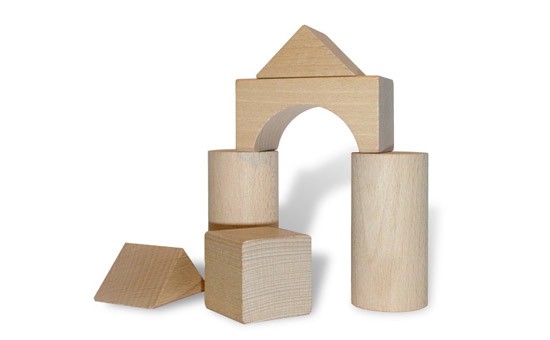
Before building your idea, you hopefully will answer yes to these questions:
- Does it solve a specific problem?
- Does it make life better?
- Do you know how to code?
- Do you swear by the old gods, and the new, that you’ll persevere and actually spend time building your startup?
If your answer is yes, then strike while the iron is hot and prepare for some sleepless nights spent building and coding.
But do not worry if your answer to number 3 is no. There are still ways to build your idea, although you will need someone to do it for you. Or you can learn how to code yourself!
Should you look for a co-founder? Well, that’s an option too, finding a co-founder who can code. However, the friction between co-founders, especially when one can code and the other can’t, might get intense as the project progresses. You don’t want to be the “idle founder”, right? So it’s better if you start learning how to code right now, or be resourceful enough to find tools that will help you build your dream service/application.
Communities and Resources
Of course you just can’t waltz in and out of your text editor and office then manage to come up with the perfect startup. Don’t try to reinvent the wheel. There are communities out there, both inhabited by dreamers like you and those who have been successful (or are getting there) that you can join. There are also tools that can help you boost your startup, so you won’t have to worry about anything. In fact, I’d go as far as to say that you don’t even need to reach for your wallet!
Communities
- /r/Startups and /r/Entrepreneur
- Hacker News
- StartupLi.st
Resources
Having a good list of connections is important, especially when you’re betting a lot. While under development, be sure to find online communities out there to join. Ask questions, provide feedback, and read inspiring success stories. This is important to keep your fire burning!
Questions I Asked (and answered) Myself
1. Can I do it on my own?
Yes. But it will be a daunting task since you will be taking the roles of designer, developer, marketer, and everything else.
2. Do I need thousands of dollars to actually build my startup?
No, not really. In the Philippines we have this website called Sulit.com.ph, more like Craigslist. It was founded in 2008, and right now it receives over 150 million visitors monthly seeking things to buy and sell. The founder built it during his free time, from scratch, without prior knowledge of programming. His expenses through the development process to launch were less then $100 for the domain registration and hosting. Right now he is earning 7 figures monthly.
3. Should I do it?
Yes. In fact, I believe that everybody should at least try. “Do or do not, there is no try,” said Yoda. You either do it and fail or not do it and never know what the outcome could have been!
Are You Ready?
Sit for a while after reading this and think about whether or not you’re ready to make great changes in your life. Are you ready to take a risk, spend several hours a week to learn new skills, and join online and offline communities to actually steer your life the way you really want it to go?
I wrote this because I am brewing something amazing together with friends, which will hopefully launch several months from now. Yes, my partners and I are taking it slow since we still have our full-time jobs. But don’t you worry, I won’t leave 1WD! In fact, I’m pretty sure the two will integrate well! I’ll just leave it at that, without giving away too much information, since we’re still in the initial phase of things.
So, what about you? Do you have a good business idea? Or have you started with it? Post in the comments and let’s discuss!
Question for you: what if your startup failed?
Next up are reasons why absolutely need to set up your portfolio page. This is a must if you plan your freelance career.
10 Reasons Why You NEED to Launch Your Online Portfolio NOW
The world has gone digital and everything in it automatically follows. Jobs are no longer stereotyped to be activities where you have to sit on a boring chair all day. Nowadays, people can work anywhere they want, thanks to the Internet. Portfolios can be hard copies of the projects that you have done. Yes, some people still do that but since we are now at the digital information age, a website can be a perfect substitute.
Now, you ask me, “Why do I need to create a portfolio? I’m doing well in my job. Why take the hassle and waste time compiling my previous work?”
Here are a few of the reasons why you should start a portfolio website right NOW:
To help you stand out among the rest
Once you applied for the job, you should know that you have a lot of competition. To best these other options your client is considering, have an ace and create a beautiful and detailed portfolio.

Here are a few tips on how to make your portfolio stand out:
- Create an artistic and trendy-looking portfolio website. (Look for inspirations here)
- Put your best works first
- Do not put your not-so-good projects
- Be honest yet witty
- Write an enticing headline
For the client to see your work anywhere, anytime

Almost everyone has a smartphone nowadays. Because of that, your clients or future employers can check on you anytime they want. Of course, you want them to see is your portfolio. Focus on making it beautiful by:
- Assuring that the website is responsive
- Optimizing the website’s SEO.
- Assuring that you use clear graphics and a simple but killer copy.
To save great amount of time

In freelancing, as is in any business, time is of the essence. Most of your clients would want to see your work in an instant. Making your future clients see what you can really do will surely save you time against interviews and examinations. You just simply go straight to the point.
Because it’s more personal
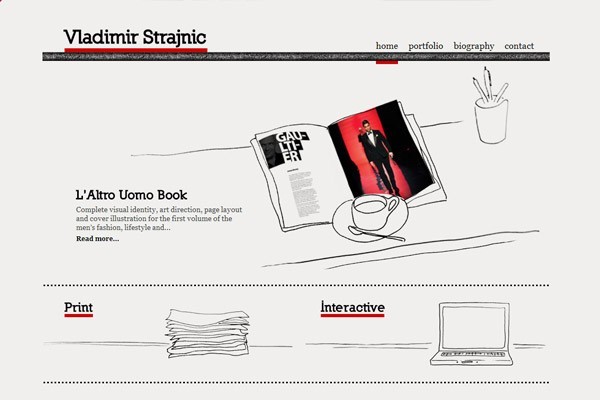
When you create an online portfolio, you share your style and your personality in the designs, basically a part of yourself. Because of this, clients can easily understand what you are capable of. You can also include testimonials, which I think, makes your work more credible. Personalized online portfolios will also prove that you really did the ones posted and you just didn’t Google images of sample output.
How to make your portfolio more personal?
- Add testimonials
- Write in a very descriptive and personal manner
- Voice out your difficulties and your feelings while doing the project
- If possible, you can include WIP pictures
It shows how much real experience you’ve had

Creating a portfolio website will also show how much real experience you had. Yes, you may put some projects on your resume but posting them in a website would make your readers see for themselves how good you are. No BS.
It implies you are organized and creative
Online portfolios show your creativity and organization by allowing clients to see how you detail the documentation for each project and gather testimonials for it. You can also showcase your creativity through the use of creative catchphrases or taglines and of course, beautiful web design!
It catches the eye without any effort

For a competitive field like web design, the ability to catch attention is essential for survival. You need to show off because it’s the only way to earn money. You need to make the client look at your work rather than anyone else’s. And what better way to do that than to compile everything you have done in sleek and professional-looking portfolio website!
You can get hired without saying anything
Less talk, few mistakes.
Portfolio websites give you the chance to prove that action speaks louder than words. It saves you from talking too much because you feed your clients with output rather than blabbers. Your clients would want to see for themselves what you have done, rather than hear you talk all day. Trust me on that.
Other potential clients can easily see you

This, I think, is the best card you can play with an online portfolio. It’s online. That means, a client may stumble on it anytime of the day. Putting up a portfolio website is like putting an ad that just stays there. With that, you are selling yourself without even trying to.
It will boost your chances of getting hired

A portfolio website will boost your chances of getting hired. Yes, it does. Giving your clients an overview of what you can do, what you have done and how much you charge will ease their process of selection. Businessmen love to work fast and if you help them do it, then, you are given plus points for that.
Conclusion
Truly, creation of portfolio websites is becoming more and more popular. That is why you, as a web designer and a worker of the Web, you should keep up. Again, as I said, you should show off what you have done because it’s the only way to get hired and get clients. I hope you can put up your portfolio now and let me see it.
This section is about people, that everyone who is starting out as freelancer, should have in their social network.
Three Types of Friends Everybody Should Have: Mentor, Peer, and Protegé
Every writer, blogger, designer, developer, singer, actor, at some point started out confused in their chosen career. Not knowing where to go, what to do, and how to react to the things that happen. Look at where you are now: successful, or still working to become successful, but surely you owe what you are now to someone who went out of their way to teach you the basics and guide you whenever you needed a little bit of help.
Mentor

Everybody should have a mentor in life, not only in your trade. Someone who will share their wisdom when times are hard, someone who will teach you patience and things that you can never hope to understand alone. A mentor is someone who inspires you, someone whom you can hang out with anytime you need him/her. This can be your father, mother, godfather, boss, senior, you get the idea. Having a mentor is the best way to have your actions and thoughts kept in check.
Doing business online with people requires skills, and beginners need someone who will serve as a guide. The person whom I consider my mentor told me to pursue the things that makes me happy, as a result I’ve gained some pounds because I sit in front of my computer all day, typing and reading.
Everybody has one, it may be your middle school teacher, your college professor, or someone you met online. At one point in time you will certainly feel down, maybe because of a client who rejected all of the designs you presented, an article you submitted to a website got sent to the trash, the website you developed crashed, or even as simple as a hater’s comment on your blog post. This is when you need someone to turn to for advice, someone who has been there and survived the crash. Believe me, this is very important. As for me, I am not a great writer but I love writing. One time I was told that my writing is terrible, that I had no future in writing. Writing being one of the few things I genuinely love to do, the comment crushed my heart and I almost stopped. Good thing is I have someone who told me to “stop for a while and don’t start breaking the plates.”
Peer

Someone you consider your equal and who treats you as theirs. A fellow novice or master in your chosen craft. This is why forums and other support groups exist,so people that are on the same wavelength talk about the things they can’t tell others because, probably, others won’t understand. Having a friend who you consider to be of equal caliber is a great thing. You can spend all day talking about the last client you had, rant about the things that irk you, or even insult each other. This is actually healthy, because having a friend who is close to your age and skill (or slightly above you) is what will keep you evolving. Is it not obvious why self-obsessed people rarely make it to the top? It’s because they do not consider anyone to be above or equal to them, making things a little static.
I am a beginner when it comes to blogging, and I look up to my pals here at 1stwebdesigner. Most of the time, when I’m not procrastinating, I’m doing my best to learn from them and competing with them in a healthy way. That’s what keeps me going, someone whom I can run side by side with and talk about work and casual things. It’s not that hard, talking about private life too, since we’re almost of the same age. That is something you can’t remove in any age group, most people will always feel at ease when someone they work with is of the same age.
I’m pretty sure that everyone has friends either known personally or in the internet.
Protegé

Nothing beats having a younger friend to teach the important things in life and career to, someone you can guide along the path he/she really wants to take. Because you have been there once, you can easily guide someone who is about to follow a similar path. Plus young people have lots of wild ideas that may help you.
I am still far from this, but I am hoping that when the time comes I’ll take someone and teach him/her everything I know, be a mentor to a kid who’s just setting out.
For established writers, designers, developers, and others, I’m hoping that you have one or two beginners that you are teaching. Although I’m still far from being a mentor, I am sure that I will want to leave something behind with someone.
You’ve been there, you know what to do, make it easy (or hard) for them to do it. It is true that future generations are, most of the time, better than the previous. This is because the previous generation has taught things, things that should have been done and the should nots.
Like leaving behind a living testament to what you were. It may seem grim to think that someday you’ll be gone, but isn’t it heartwarming to think that you’ve helped someone achieve their dreams even if you’ve already retired? But I’m not saying that you should take someone under your wing when you’ve retired already, you can start now, actually. So, who’d want to take me? I don’t bite.
For some this may be obvious, to others it might not, but you wouldn’t be where you are now if no one helped you somewhere along the way.
So, what is your story?
This post may contain affiliate links. See our disclosure about affiliate links here.







